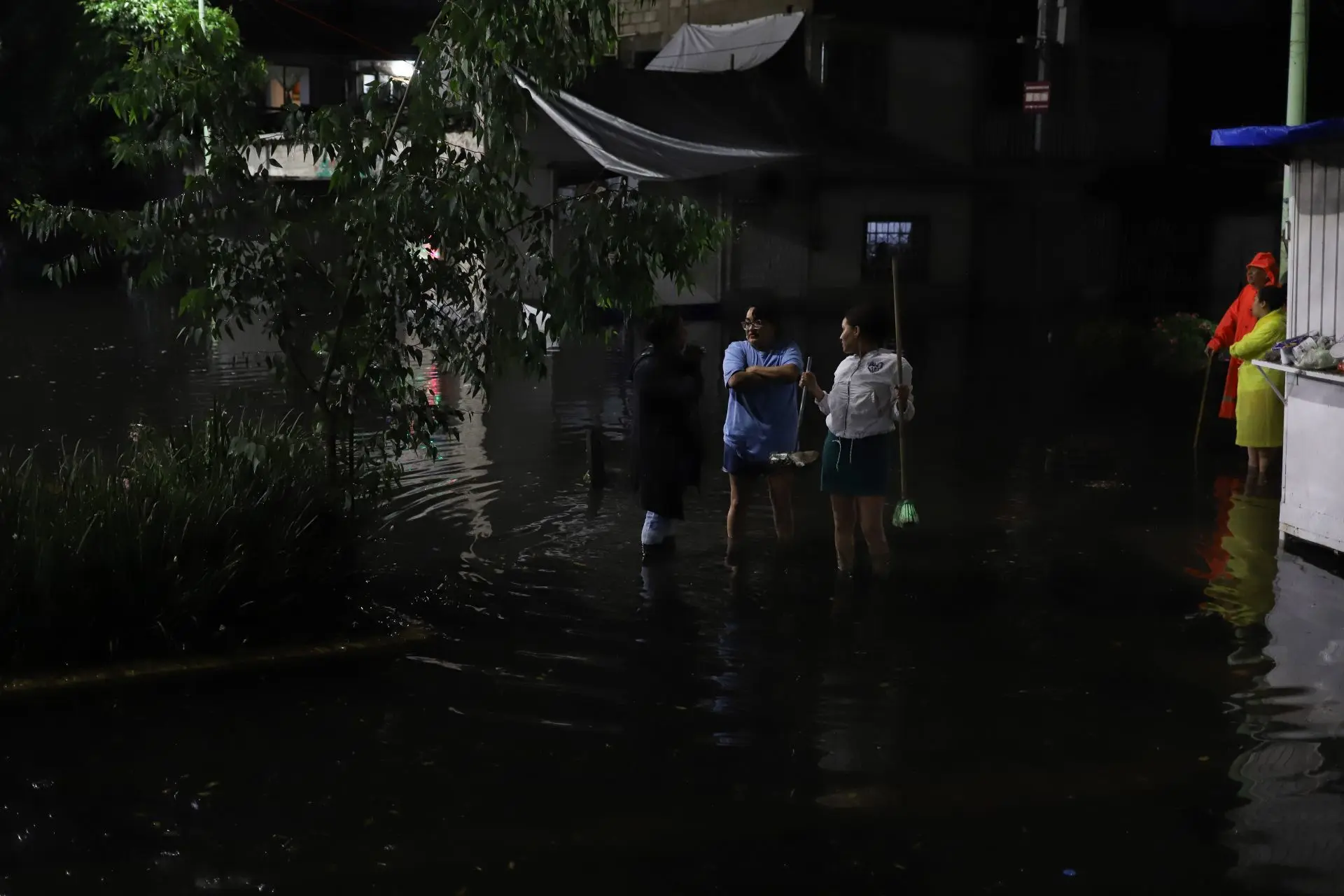Mexico City experienced a chaotic day this Sunday, August 10, when a severe storm caused flooding in streets, subway stations, hospitals, and even inside and outside Mexico City International Airport (AICM). The meteorological phenomenon partially paralyzed air and ground transportation, affecting thousands of commuters and pedestrians.
Subway service suspended on several lines
Around 7:30 p.m., a short circuit occurred between the San Antonio Abad and Chabacano stations on Line 2, forcing service to be suspended at three stations for an hour and a half. The cause was a cut cable that, upon contact with rain, damaged the electrical system. Service was restored around 9:00 p.m.
Line 5 was also partially out of service around 9:00 p.m. at the Eduardo Molina, Aragón, Oceanía, Terminal Aérea, Hanares, and Pantitlán stations. It only operated between Politécnico and Consulado.
Service on Line 3 was interrupted in Guerrero, Tlatelolco, and Deportivo 18 de Marzo for track inspections, continuing only between Hidalgo–Universidad and La Raza–Indios Verdes.
The rains caused severe flooding on roads such as Calzada Ignacio Zaragoza and Río Churubusco in Iztacalco. The city government reported that, through the Tlaloque Plan, it deployed more than 140 personnel to address 41 flooding incidents, five fallen trees, and flooded vehicles.
The Balbuena Hospital in Venustiano Carranza suffered flooding in some areas, forcing the transfer of patients. In the Moctezuma neighborhood, 15 streets reported high levels of flooding.
“The main flooding occurred in the municipalities of Cuauhtémoc (11), Álvaro Obregón (3), Azcapotzalco (5), Benito Juárez (1), Iztacalco (1), Miguel Hidalgo (1), and Venustiano Carranza (1), primarily,” the government reported.

Flooded Streets and Hospitals
The rains caused severe flooding on roads such as Calzada Ignacio Zaragoza and Río Churubusco in Iztacalco. The city government reported that, through the Tlaloque Plan, it deployed more than 140 personnel to address 41 flooding incidents, five fallen trees, and flooded vehicles.
The Balbuena Hospital in Venustiano Carranza experienced flooding in some areas, requiring the transfer of patients. In the Moctezuma neighborhood, 15 streets reported high levels of flooding.
“The main flooding occurred in the municipalities of Cuauhtémoc (11); Álvaro Obregón (3); Azcapotzalco (5); Benito Juárez (1); Iztacalco (1); Miguel Hidalgo (1); and Venustiano Carranza (1), primarily,” the government reported.
AICM paralyzed for three hours
Mexico City International Airport was one of the hardest hit locations. The aviation authority suspended landings and takeoffs for three hours due to flooding on runways and loss of visibility.
“Due to the heavy rains this afternoon and reports of poor visibility, and in order not to compromise operational safety, by order of the aviation authority, landing and takeoff operations will remain closed for the next three hours so that stormwater removal work can be carried out to restore operational capacity,” AICM announced on social media.
Users shared images of water entering Terminals 1 and 2. Airlines such as Aeroméxico, Viva Aerobús, and Volaris announced delays and cancellations. Some flights were diverted to other airports, such as Acapulco.
Historic Center and Zócalo Flooded
The storm did not spare the heart of the city. The capital’s Zócalo and surrounding areas, such as the Metropolitan Cathedral, reported flooding that complicated pedestrian traffic.
Major Mayor Clara Brugada reported that all emergency services had been activated:
“Heavy rains and hail have been reported, as well as flooding in various parts of the city, which are already being addressed.”
Preliminary Assessment
Although authorities have not reported the number of people affected or quantified the damage, the magnitude of the meteorological event made it clear that the capital’s infrastructure remains vulnerable to extreme rainfall.
The affected metro lines included lines 2, 3, 4, 5, 8, and A. At several stations, police officers provided guidance on alternative routes for users.
The closure of the AICM (Metro Line) and the problems with underground transportation left thousands of residents and visitors stranded, highlighting the direct impact that an intense storm can have on the city’s mobility and safety.
Source: quinto-poder




